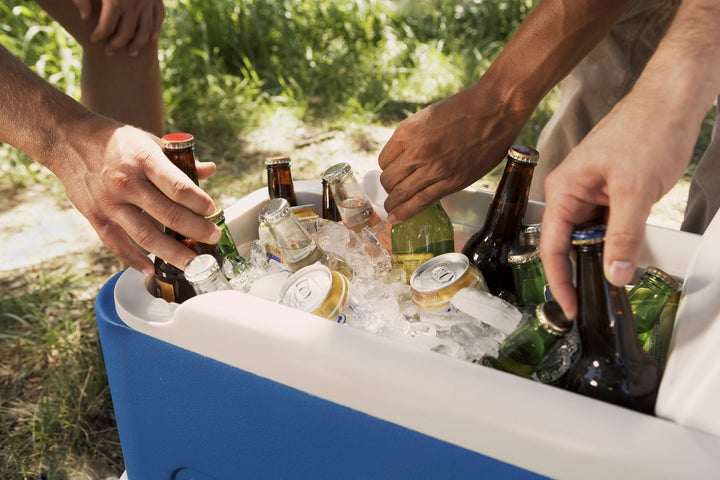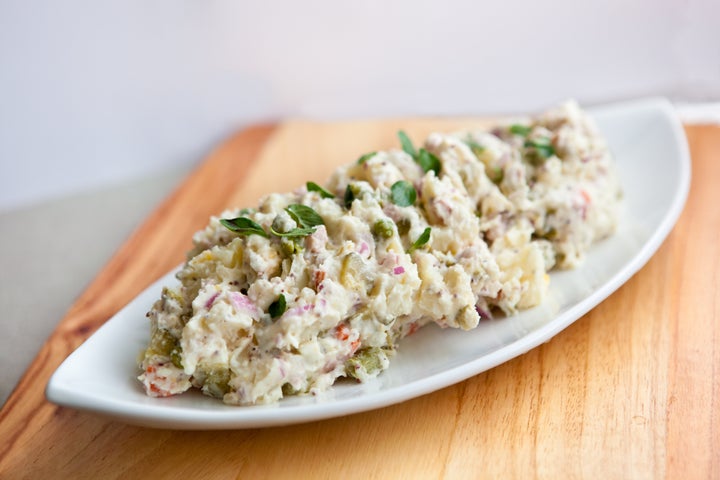
Summer celebrations can be some of the best times of the year, but warm temperatures also bring an increased chance that some of the food being served could contain dangerous bacteria.
“The peak timing for foodborne illness is during the summer months, particularly in July and August,” said Dennis D’Amico, an associate professor in the department of animal science at the University of Connecticut. “This is the time of year associated with increased cases of listeriosis, campylobacteriosis, salmonellosis and Shiga toxin-producing Escherichia coli infections.”
The connection between warm weather and food problems happens because the creepy critters love a warm place to settle in and multiply. Food scientist Bryan Quoc Le explained it this way: “As temperatures become warmer, the rate at which microorganisms grow speeds up. While most spoilage and pathogenic microorganisms have very slow growth rates at refrigerator temperatures, they accelerate to 10 to 100 times the growth rate per hour at temperatures that reach 80°F to 85°F. That means the number of bacteria that can cause food poisoning will double at a much greater speed.”
We asked food scientists to pinpoint some of the biggest potential dangers at outdoor events. They told us where to look for trouble — and how to avoid it.
1. Undercooking meat (which is more common than you’d think)
Glenn Morris, director of the University of Florida Emerging Pathogens Institute, said that bacteria like Salmonella and Campylobacter, which cause the greatest problems with foodborne illness, tend to be associated with raw meat and poultry. The best way to prevent sickness is to make sure all of your meat is heated to the right temperature.
“These foodborne disease bacteria are killed by cooking, so make sure your chicken and hamburgers are well-cooked,” Morris said.
When you’re grilling, keep a thermometer near, D’Amico said. “Color and texture are not reliable indicators of food safety or doneness. Meats must be cooked to the proper internal temperature and verified using a food thermometer.” Ground meats must be cooked to 160°F, chicken to 165°F and fresh steaks and chops to 145°F.
When the meat is cooked, don’t put it back on a plate that still has juices from the raw meat, Morris said.
“Even though the meat is cooked, you can recontaminate it with bad bacteria from raw meat and poultry juices that linger on a platter.”
2. Keeping food out at room temperature
The danger zone in which bacteria multiply is between 40°F and 140°F, so your food should always be either cooler or warmer than that.
“Food that needs to stay cold needs to remain below 40°F, with plenty of ice and proper insulated storage, like coolers and Styrofoam chests,” Le said. “Food that has been warmed up should be kept over 140°F. You can keep it warm using the side of the grill rack or an alcohol burner.”
A good rule of thumb is to leave food out at room temperature for no more than two hours. Le explained why: “Bacteria can divide at room temperature every 15 to 20 minutes. So one single pathogenic bacteria can become 16 within the first hour, 256 in the second hour and over 4,000 in the third hour. Some species and strains can multiply at an even faster rate, depending on conditions in the food.”
Depending on the toxins produced by the bacteria, some microorganisms can cause food poisoning with as little as 10 individual bacteria cells, while others require hundreds or thousands in number to cause sickness, Le said. If you’re more vulnerable, the risk is greater, and he noted that children, pregnant women and elderly individuals can have a weaker immune system that might be more severely affected by contaminated food.
“Listeria monocytogenes can cause additional complications in pregnant women, and listeriosis can induce abortion, stillbirth, or meningitis in newborn babies,” he said.
That’s why food cleanup should start when the meal is finished, not after you try one more round of volleyball with the fam.
“The last thing you want to do is to leave food sitting out in the heat for a couple of hours, allowing the bacteria that may be present in them to grow luxuriantly,” Morris said.

3. Deli salads, whether they’re homemade or store-bought
Items that contain eggs — including homemade dressings, mayonnaise or dishes like deviled eggs or egg salad — are a concern, because eggs can be contaminated with the bacteria Salmonella or Campylobacter, which can cause serious illness.
“Both are inactivated if ingredients are cooked properly, but they could remain present if the eggs are used raw or are undercooked,” D’Amico said.
Another issue is premade or prepared salads like coleslaw, chicken, tuna, egg and potato salads.
“They’re popular during the summer, but there’s a concern due to potential contamination with Listeria monocytogenes,” he said. “This bacterium can be found in processing and deli environments and can contaminate prepared foods and their ingredients. Listeria can grow in the cold, so if a food is contaminated [with] Listeria, its numbers can increase even during cold storage at the deli.”
4. A lousy cooler
The experts also noted that you need to make sure your cooler is working correctly. For that, you’ll need plenty of ice.
“A full cooler will maintain its cold temperatures longer than one that is partially filled, so it’s important to pack plenty of extra ice or freezer packs to ensure a constant cold temperature,” said Mary Anne Amalaradjou, associate professor of food microbiology in the University of Connecticut Department of Animal Science. Other cooling tips from her: “Keep the cooler out of the direct sun, and keep drinks in a separate cooler from foods. The beverage cooler will be opened more frequently, allowing the food cooler to stay cold.”
5. Repurposed ice
Drink-worthy ice is not cooler ice, Morris said, noting that dirty coolers or cross-contaminating food juices could make a cold drink dangerous to consume.
“Whenever you plan to serve drinks over ice, use clean ice in the glasses,” he said. “While it may be convenient to just reach into the cooler and pick up a handful of ice, think about what that ice has touched. It doesn’t belong in a drink. Instead, pack a zipper bag of drink-worthy ice cubes in the cooler and use that for your beverages.”